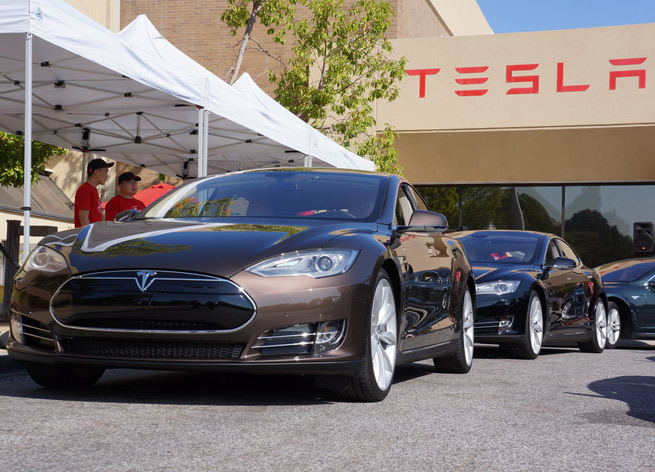Tesla is on a roll right now, with 14,000 of its all-electric Model S luxury sedan on the road and its stock at record highs.
If it achieves its planned production levels–21,000 cars this year, perhaps 40,000 by 2015–its voracious appetite for lithium-ion battery cells will only increase.
The massive scale of cell purchases by Tesla Motors [NSDQ:TSLA] has already boosted global production levels.
It may soon use as many ‘18650’ lithium-ion cells itself as the entire industry produced before the Model S went into production a year ago.
But ensuring adequate battery supplies in sufficient time to expand car production is absolutely key to continuing Tesla’s growth.
Scale is crucial
From the time of Henry Ford, a key attribute that has characterized the auto industry is scale. Each car contains thousands of parts, most requiring their own assembly lines, all of which come together in massive factories that assemble the finished vehicle.
When you build thousands of cars a day, the sheer industrial might and logistical prowess can be mind-boggling.
In the case of tiny Tesla Motors, the rapid sales growth of the Model S is already putting its typical automotive parts suppliers under enormous strain.
CEO Elon Musk has noted that some suppliers tooled up based on projections that Tesla would build no more than 3,000 Model Ses over the car’s lifetime. Instead, that’s now only six weeks’ production.
In the previously non-automotive lithium-ion battery industry, Tesla may be having its single greatest impact.
Tesla’s big battery
The Nissan Leaf is the best-selling electric car in history: From December 2010 through mid-July 2013, Nissan sold more than 71,000 of them globally. With a 24-kilowatt-hour battery, that works out to a total of about 1.7 million kWh over 32 months of production.
In contrast, Tesla is on pace to sell 21,000 Model S sedans this year.
Based on user data from the Tesla Motors Club forum showing that less than 30 percent of buyers opt for the entry-level 60-kWh battery, we can conclude that in just 12 months of production, Tesla will have deployed more than 1.6 million kWh worth of batteries.
In other words, Tesla has soaked up almost as much battery capacity in a year as Nissan has in almost three.
This underscores a fundamental truth: Tesla’s batteries are a lot bigger than the Leaf’s, or those of any other electric car.
As a result, Tesla is about to have an outsized impact on the battery industry as it scales up its car production over the next few years..
Already a major player
This reality has already shaken up the consumer battery industry.
Panasonic, Tesla’s primary battery supplier (and investor), went from a loss of 2 billion yen in the second quarter of 2012 to a profit of 4 billion yen in the most recent quarter–largely on the strength of the voracious increase in demand from the Model S.
The carmaker’s rapid production scale-up has prompted Panasonic to expand capacity, by reopening previously idled plants, while simultaneously committing to build entirely new production lines.
In addition, Tesla is close to signing production deals with Samsung SDI and other major players to secure even more future production capacity.
7,000 cells x 21,000 cars
Underlying the frantic efforts of the battery industry to ramp up capacity for Tesla are the cold, hard statistics of the Model S battery system.
Each and every 85-kWh Tesla battery pack contains more than 7,000 automotive-grade cells, all in the common ‘18650’ cylindrical format.
The entire industry produces about 660 million cylindrical cells a year; the 18650 format is by far the most popular.
By the end of June, Panasonic had already delivered 100 million cells to Tesla, and the Model S production rate is rising. Plans are in place for Tesla to reach an annual pace of 40,000 cars per year by the end of 2014.

